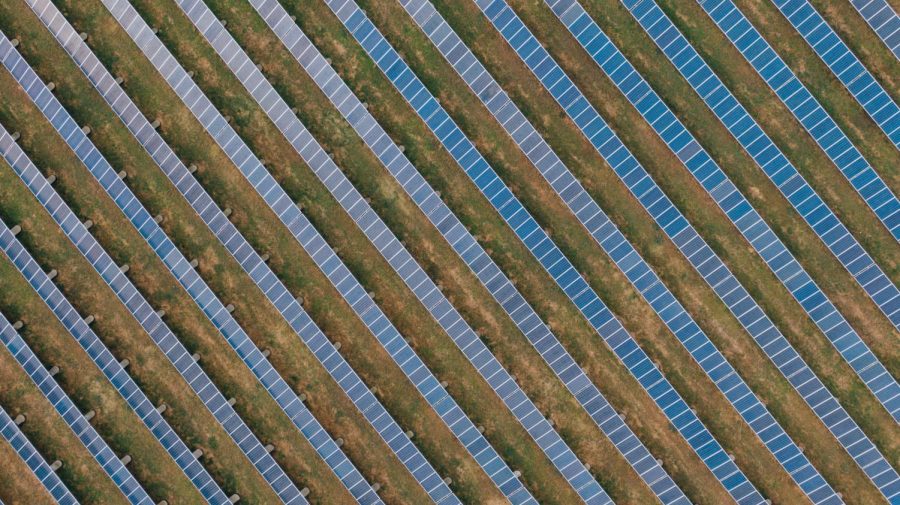Barney: The People in Power Need to do Something About our Power
October 3, 2022
Electric vehicles have been taking over the automotive market at an accelerating pace. With companies like Ford and GM entering the scene, it’s likely that within the next century, most transportation will be electric. None of this can happen without electricity, but it’s likely that our energy grid won’t have the capacity to fully support an electric world.
With that in mind, there are some serious issues with our current energy infrastructure. To start, most of it has been around since the Roosevelt administration. Certain sections of the grid need serious repair or outright replacement. Climate change will require us to make significant changes to our energy infrastructure anyway, making now the perfect time to change. Specifically, we need large investments in a better energy grid. Politically, this means advocating for better, smarter tech in our energy grid, fixing current infrastructure and upgrading, with obsolescence in mind.
After the initial production of electricity, power travels through a wire to a substation. Here, it’s transformed into a safer type of electricity that goes through power lines to our homes. As mentioned, our energy grid is old. Most cross-continent power lines were laid down pre World War II. We see this problem maintained across multiple parts of the network, as the average age for base stations sits at around 40 years.
This aging infrastructure poses an issue for when we want to upgrade, but it is also a catastrophe waiting to happen. Everything in our modern world runs on electricity. An old energy grid, however, is more susceptible to failure, and it will fail at more alarming rates the longer the problem is delayed. This threat is compounded by other, unavoidable issues such as weather. An example is heat’s proclivity to grid failure, which has become an issue in California. Moreover, the cost of repair increases the more we wait.
In a nutshell, utility companies are terrible. Most of the U.S. energy infrastructure is privately owned — which is cool if you like capitalism, but not cool if you’re dependent on a utility in dire need of repair. Most of the companies making up the grid have neglected fixing their infrastructure. Neglecting repairs on the basis of them compromising profits has significant consequences like power outages or in worse cases, people dying.
This issue lacks adequate attention in political spheres. President Joe Biden’s administration pushed for a $65 billion investment in the grid, but this isn’t enough. Properly fixing or replacing the grid is extremely expensive. It’s also an incredibly lengthy process. Estimates put the cost at around $1 trillion. Efforts to address this potential catastrophe are slow moving. Since the danger isn’t immediate, people don’t view it as too big of an issue. This is untrue. Energy infrastructure is also typically seen as boring — if you bring it up on a date you won’t get a second one — so there’s the obvious public disinterest.
Fixing our grid will hopefully also mean expanding it. Even today, there are communities in the U.S. that don’t have full access to electricity. This applies to many Utah communities. Given energy’s necessity in our modern lives, this is ridiculous. A grid with more capacity will mean underserved communities will also get the opportunity to use electricity.
Put simply, we should fix it because we need to. We will die without access to electricity. A collapse of our energy infrastructure would be disastrous for the economy and, more importantly, for the humans that exist within it. Leaving it alone just isn’t an option. Climate change requires an infrastructure redesign, so why not kill two birds with one stone? Our infrastructure’s collapse is inevitable; this is the perfect opportunity to replace it with something better.
Utility companies that receive government subsidies either need to use them to properly upgrade and repair the grid or no longer receive them. We all need electricity. They cannot waste our tax dollars anymore. Nationalizing the industry is a good alternative to slashing their government subsidies, but it requires more work politically.
We need to plan our grid with the future in mind. This means making our grid more modular, creating proper energy storage and implementing smart technology. This cannot go forward as a sloppy, half-implemented engineering project. It must be done correctly. Politicians need to actively support bills that make a difference here, even if it’s as small as Biden’s Bipartisan Infrastructure Law. Most importantly, we need to see action now. Reworking our energy infrastructure will potentially take decades to complete, so starting soon is crucial.
We can’t fully enjoy cool advancements in technology, such as electric cars, because of the potentially catastrophic issue at hand. Our grid sucks and it gets worse every second. Waiting around isn’t an option. We must demand comprehensive change in our energy infrastructure.









Patrick Wiggins • Oct 3, 2022 at 6:12 pm
No mention of the increasing use of home solar? While the grid definitely needs to be modernized, the increasing popularity of home solar (despite efforts of some power companies) helps to power EVs and relieve stress on the grid.
Nick Rosen • Oct 3, 2022 at 12:26 pm
I totally agree with this article – check out this film about the history of the Grid. Says it all , and more.
– https://www.youtube.com/watch?v=wOrw5lRomYA